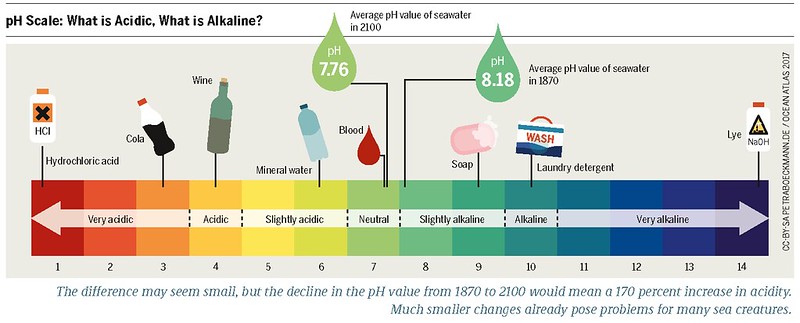The pH value of fish tank water is a crucial factor in maintaining a healthy aquatic environment for your fish. Proper pH levels ensure the optimal growth and well-being of your aquatic pets, making it a critical aspect of fish tank maintenance.
Understanding pH Levels in Fish Tanks
pH is a measure of the acidity or basicity of water, ranging from 0 to 14, with 7 being neutral. A pH below 7 indicates acidity, while a pH above 7 indicates basicity. The ideal pH for a fish tank can vary depending on the specific species of fish you are keeping.
Optimal pH Ranges for Common Fish Species
| Fish Species | Ideal pH Range |
|---|---|
| Tropical Fish (e.g., Guppies, Tetras) | 6.8 – 7.8 |
| Saltwater Fish (e.g., Clownfish, Tangs) | 8.0 – 8.4 |
| African Cichlids | 7.5 – 8.5 |
| Discus Fish | 6.0 – 7.0 |
It’s important to note that maintaining a stable pH is more crucial than achieving a specific number. Sudden pH swings can be stressful for fish, while a consistent pH allows them to adapt and thrive.
Factors Affecting pH in Fish Tanks
Several factors can influence the pH of your fish tank water, including:
-
Water Source: The pH of your tap water can vary depending on your local water supply. Some areas have naturally acidic or basic water.
-
Aquarium Decor: Certain materials, such as driftwood or peat moss, can lower the pH by releasing tannins.
-
Biological Processes: The breakdown of organic matter, such as fish waste and uneaten food, can produce acids that lower the pH.
-
Chemical Additives: Substances like ammonia, nitrite, and nitrate can also affect the pH of the water.
-
Water Changes: Performing regular water changes can help maintain a stable pH by diluting any pH-altering substances.
Measuring and Monitoring pH
Regularly testing the pH of your fish tank water is essential for maintaining a healthy environment. You can use various methods, such as:
-
Test Kits: These are readily available at pet stores and allow you to measure the pH of your water quickly and accurately.
-
pH Meters: These electronic devices provide a more precise reading of the pH level and can be useful for monitoring pH over time.
-
pH Strips: While less accurate than test kits or meters, pH strips can provide a quick and easy way to check the pH of your water.
It’s recommended to test the pH of your fish tank water at least once a week, or more frequently if you notice any changes in your fish’s behavior or the water quality.
Adjusting pH in Fish Tanks
If the pH of your fish tank water is not within the optimal range for your fish species, you may need to make adjustments. Here are some common methods:
-
Increasing pH: Adding crushed coral, baking soda, or commercially available pH-raising products can help raise the pH of your water.
-
Decreasing pH: Using reverse osmosis (RO) or deionized (DI) water, adding peat moss, or using pH-lowering products can help reduce the pH.
When making pH adjustments, it’s crucial to do so gradually to avoid stressing your fish. Sudden changes in pH can be harmful to their health.
Maintaining Stable pH Levels
Keeping the pH of your fish tank water stable is just as important as maintaining the optimal range. Fluctuations in pH can be stressful for fish, especially for young or sick individuals. To maintain a stable pH, consider the following:
-
Perform Regular Water Changes: Replacing a portion of the water in your tank with fresh, dechlorinated water can help dilute any pH-altering substances.
-
Monitor Water Parameters: In addition to pH, keep an eye on other water parameters, such as ammonia, nitrite, and nitrate, as they can also affect the pH.
-
Use Appropriate Filtration: Ensure your filtration system is working effectively to remove waste and maintain water quality.
-
Avoid Overfeeding: Excess uneaten food can contribute to the buildup of organic matter, which can lower the pH.
-
Consider Aquarium Decor Carefully: Choose decorations and substrates that won’t significantly alter the pH of your water.
By following these guidelines, you can help ensure the pH of your fish tank water remains stable and within the optimal range for your fish species.
Conclusion
Maintaining the proper pH of fish tank water is a crucial aspect of aquarium management. Understanding the ideal pH ranges for your fish species, monitoring water parameters, and making gradual adjustments when necessary can help create a thriving and healthy environment for your aquatic pets. By prioritizing pH management, you can ensure the long-term well-being and success of your fish tank.
References:
– Aqueon – The Importance of pH in the Aquarium
– FDACS – Aquarium Water Quality: pH
– The Spruce Pets – Understanding Aquarium Water pH
– Aquarium Co-Op – Understanding pH, GH, and KH in the Aquarium

